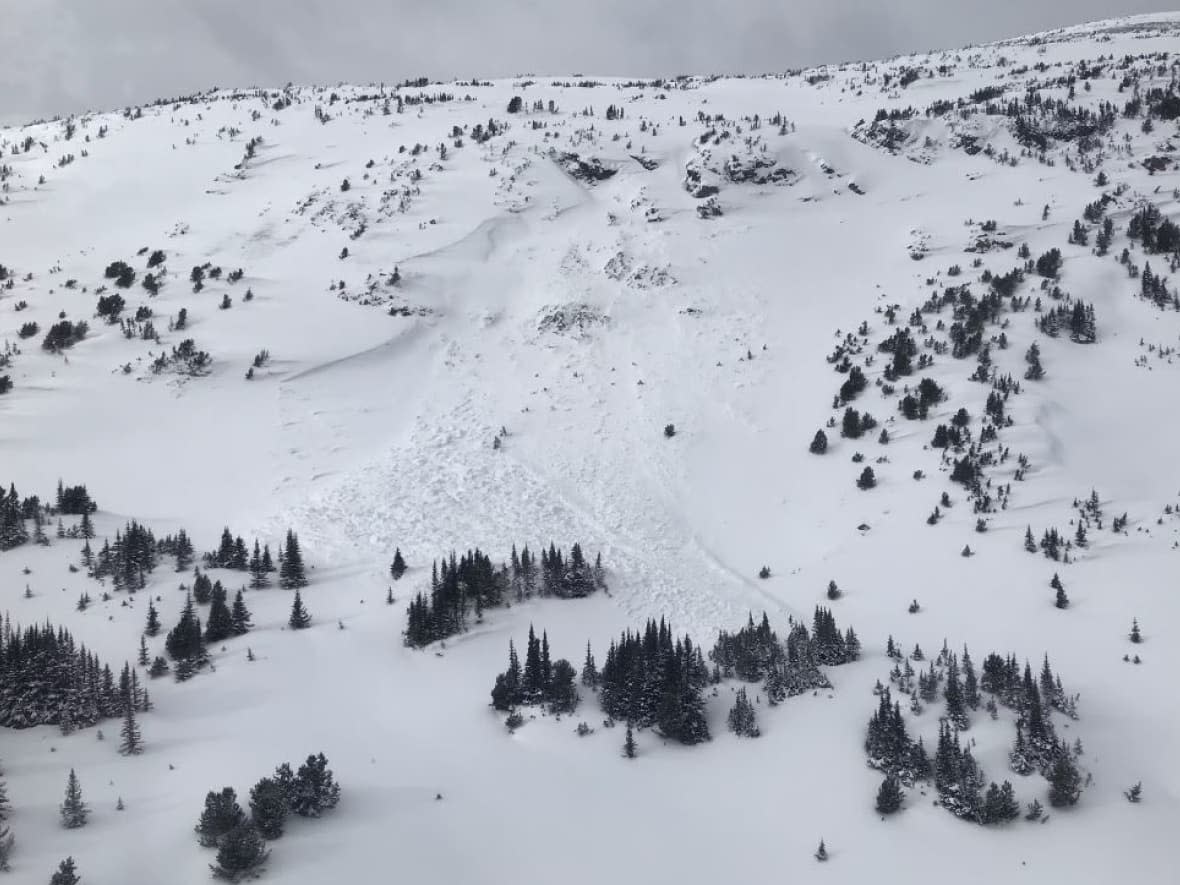2 backcountry skiers dead in central B.C. avalanche

Two backcountry skiers died Saturday in an avalanche approximately 40 kilometres south of Tatla Lake, B.C., in the west Chilcotin region of the province.
According to Avalanche Canada, the pair accessed the east-facing slope of Potato Peak on snowmobiles and were skiing when they were fully buried by the Size 2 avalanche.
The skiers were reported overdue, and a search crew found and recovered their bodies. Their identities have not been made public.
Avalanche Canada senior forecaster Simon Horton said the deadly avalanche took place outside of the Avalanche Canada forecasting area.
"This incident occurred in a very remote and rugged area where we don't get information about the snow or recent avalanche activity, which is really important information to produce a reliable avalanche forecast," he said.
Avalanches are rated on a size scale of 1 to 5. Horton said anything over a Size 2 is big enough to bury, injure or kill a person.
"So there were a couple of factors that we saw from the avalanche [on Potato Peak]," he said. "One is that it did involve very weak layers, and that's why we're calling it a 'deep, persistent slab' avalanche. And the second factor was that it was very wind-affected and that wind-blown snow on top of the weak snow would have produced an avalanche."
6th and 7th avalanche deaths of 2023
The latest fatalities bring the total number of avalanche deaths in B.C. in 2023 to seven, including two off-duty officers with the Nelson Police Department who were on a ski trip near Kaslo and two brothers from Pennsylvania on a guided heli-skiing trip in B.C.'s Interior.
On average, 10 people die in avalanches every calendar year in Canada, according to Horton.
He says people recreating in the backcountry should get avalanche training. He also recommends using the Avalanche Canada Dangerator to assess safety conditions when outside of forecast areas.
"It uses a simple checklist of a few weather and snow observations, and you can come up with an estimate of the danger rating in your area based on that," he said.
Forecasters have compared this season's snowpack to conditions seen two decades ago during one of the province's worst years on record for avalanche deaths.
"In many of our forecast regions, we are dealing with these persistent slab-type of problems — most of the Interior ranges and parts of the Coast ranges as well," said Horton. "If you see these types of problems being listed in the forecast, it generally means trickier conditions and that you should be more careful with the terrain you're travelling in."


